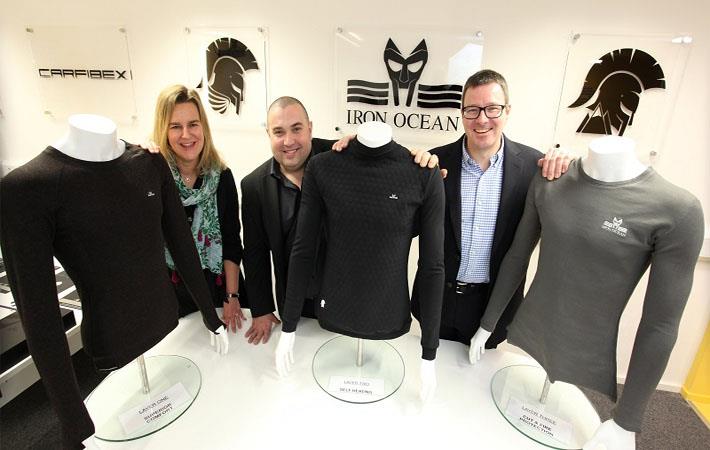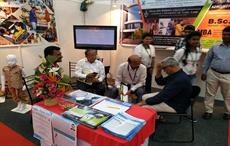Scientists from Heriot-Watt University together with Dundee-based Iron Ocean and the Oil and Gas Innovation Centre (OGIC) have designed and developed Centurion 3 - an offshore survival system. The scientists developed innovative smart materials which were incorporated into Centurion 3 offshore survival garments that withstand even the harshest conditions.
In the project Iron Ocean worked with Heriot-Watt University’s schools of Engineering and Physical Sciences and Textiles and Design.Scientists from Heriot-Watt University together with Dundee-based Iron Ocean and the Oil and Gas Innovation Centre (OGIC) have designed and developed Centurion 3 - an offshore survival system. The scientists developed innovative smart materials which were incorporated into Centurion 3 offshore survival garments that withstand even the harshest conditions.#
The three-layer upper body garment produces heat when immersed in cold water and is designed to be worn under the traditional offshore survival suit. And the garment gives the wearer increased mobility and protection as current garments worn under the survival suit do not provide active heating.
Consequently, immersion into the cold waters of the North Sea for instance, causes the body temperature of the wearer to very rapidly decrease with an estimated life expectancy of 10 – 12 minutes.
By comparison, the newly developed material incorporated into Centurion 3 immediately activates when in contact with water and produces a heat output above the average body temperature for more than 20 minutes. The self-heating material therefore allows the wearer to retain body heat, during a critical period, preventing the fatal effects of cold water immersion.
Professor David Bucknall from Heriot-Watt said: “We were delighted to get involved in such an innovative project which will help save the lives of those who work in the oil and gas industry. With our technical expertise and close interaction with Iron Ocean we’ve managed to turn a great idea into a reality. This unique garment has three layers which are slash and fire resistance, autonomous active heating and compression comfort fit, made to withstand the harshest conditions.”
“This is just the start of the possibilities that are out there in terms of the health and safety of our oil and gas workforce,” Bucknall added.
Simon Lamont, founder of Iron Ocean, and former industry health and safety manager, said: “I came up with the initial concept of the Centurion 3 following the 2009 Super Puma crash. I realised something had to be done to protect workers from the harsh elements of the North Sea in the event of an offshore incident. OGIC’s support at the very beginning of this journey was invaluable, having their backing opened the door for me to work with the expertise of Heriot-Watt University and provided the technical expertise to make my idea a reality.”
“With all of our prototype garments now complete, the next step for us is to introduce the Centurion 3 to market so it can begin saving lives offshore. There is also great potential to bring this innovative technology to other industries including leisure, military and maritime to improve safety in harsh environments,” Lamont added.
The development of the Centurion 3 involved two phases of research co-funded by OGIC. Phase one saw the development of the water-triggered heat-generating materials, which led to phase two, within which the heat-storage material was further developed for use within the prototype Centurion 3 garments. (SV)
Fibre2Fashion News Desk – India


